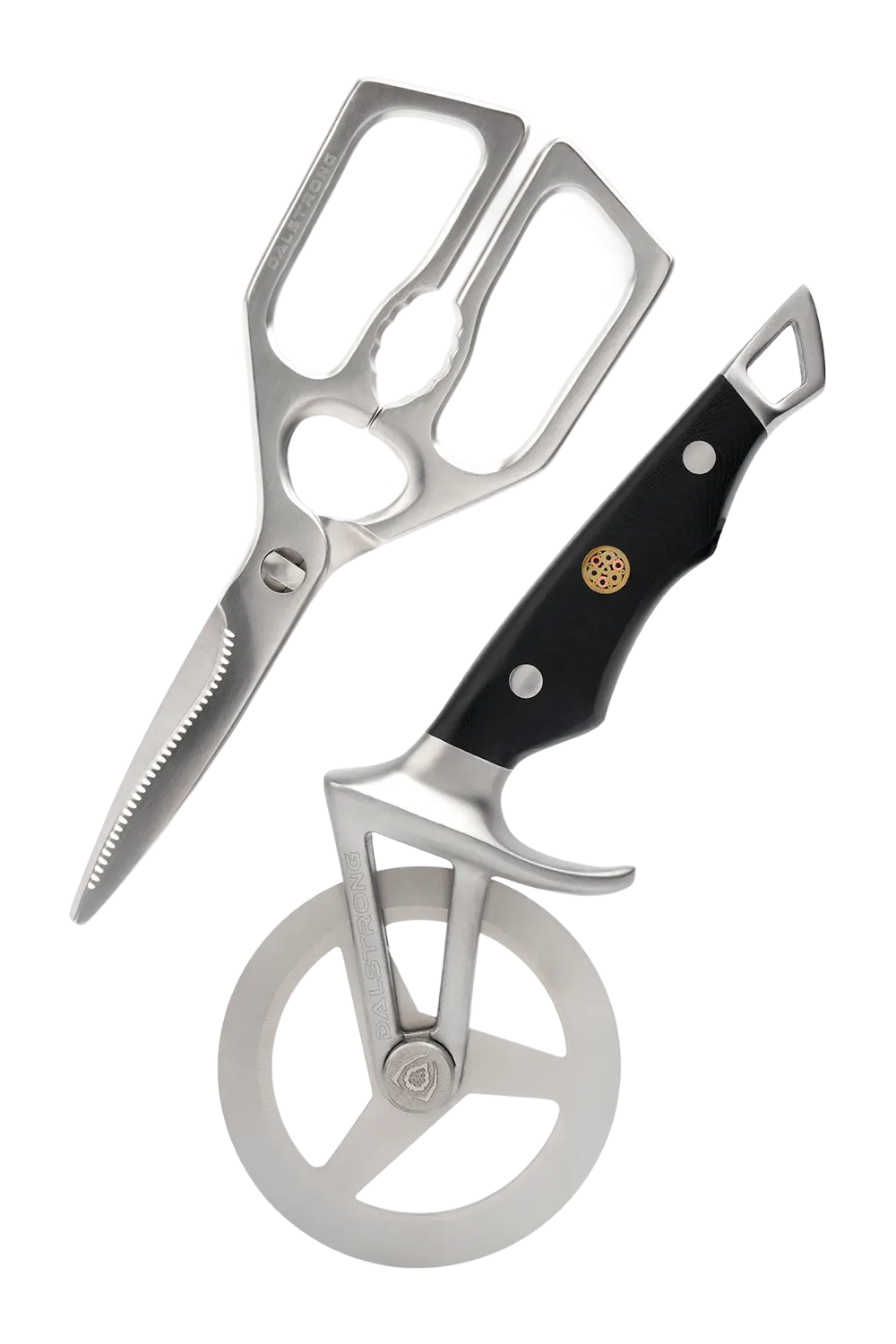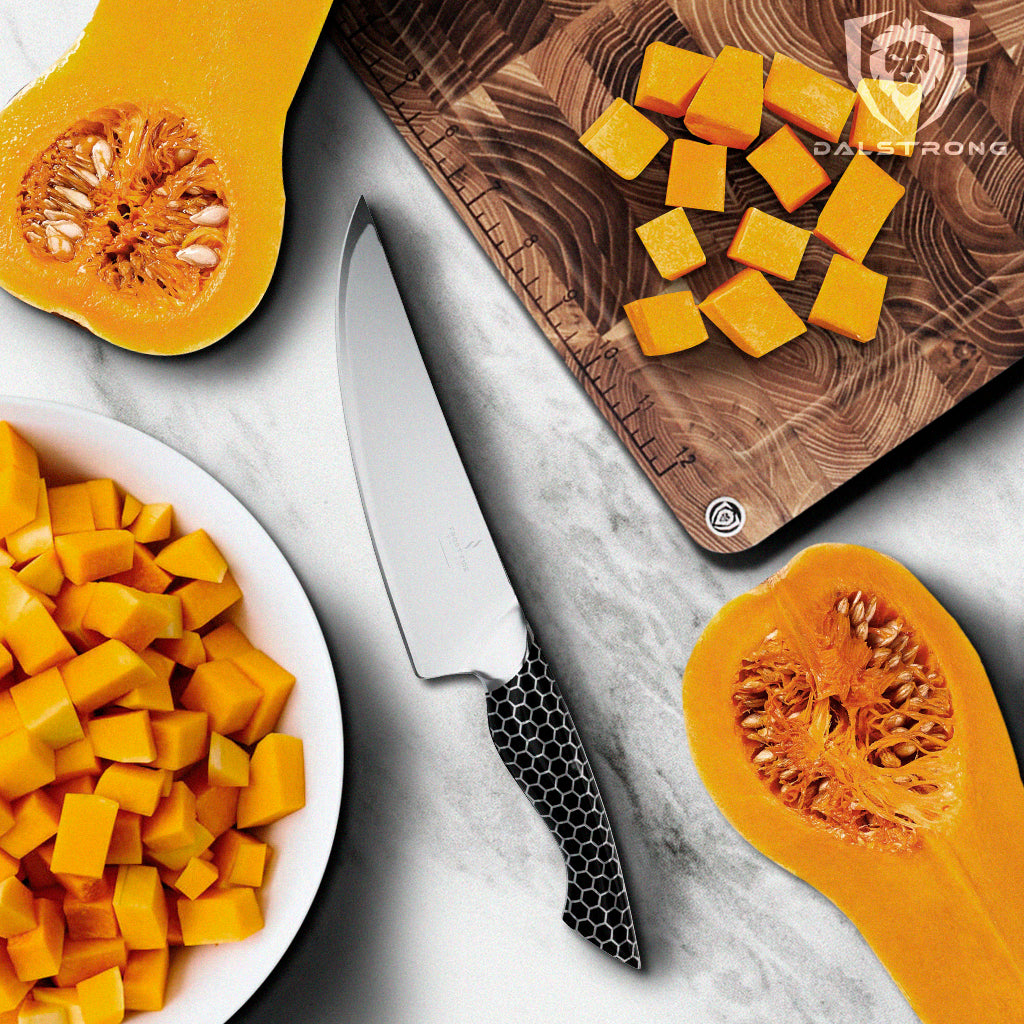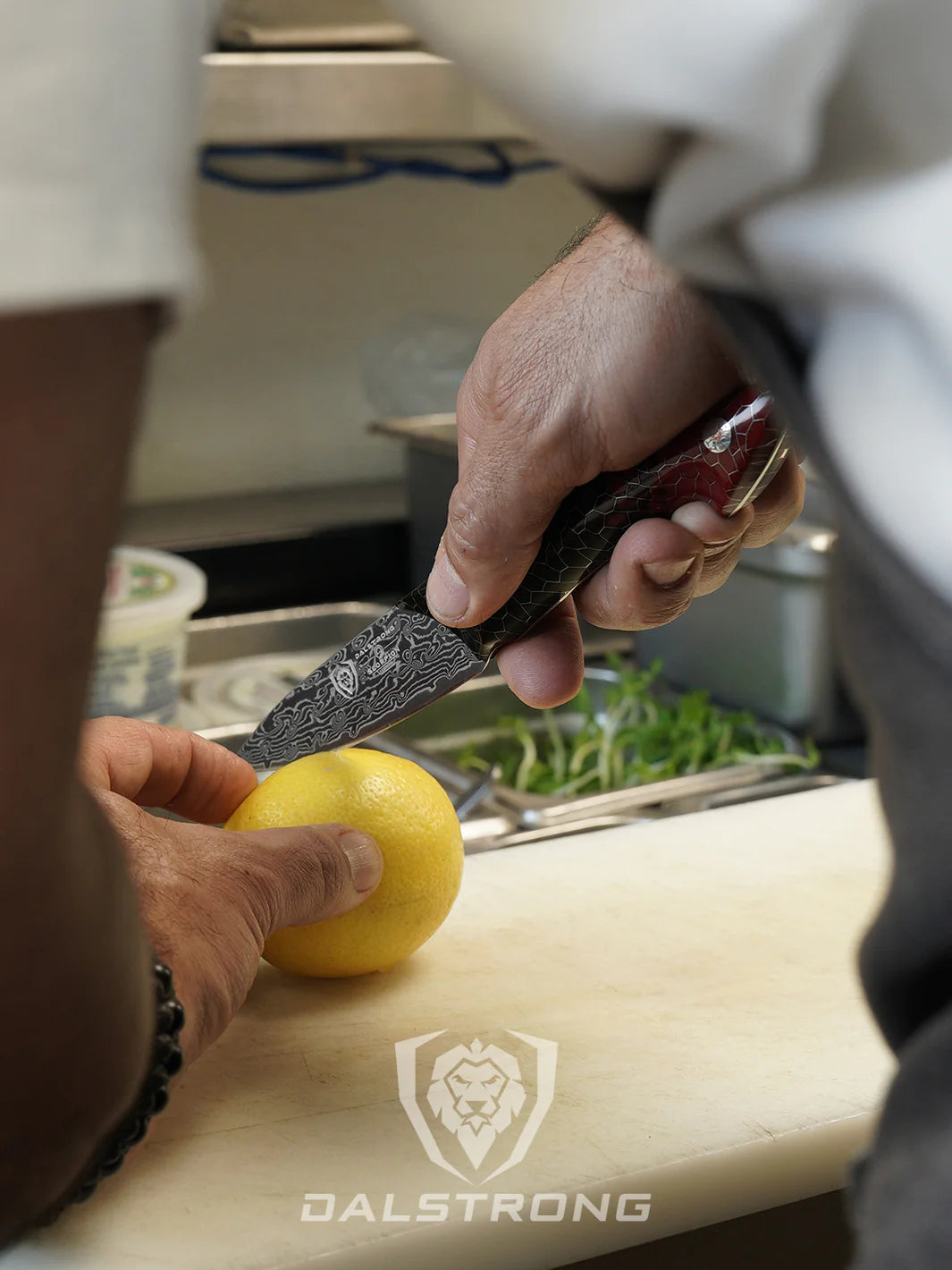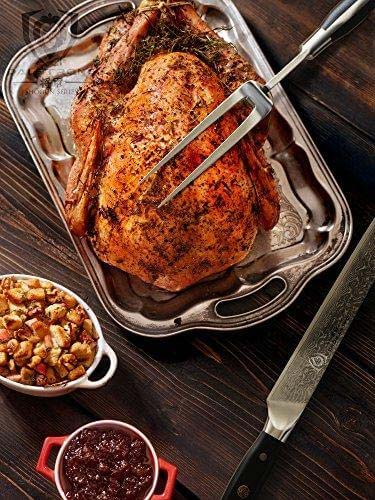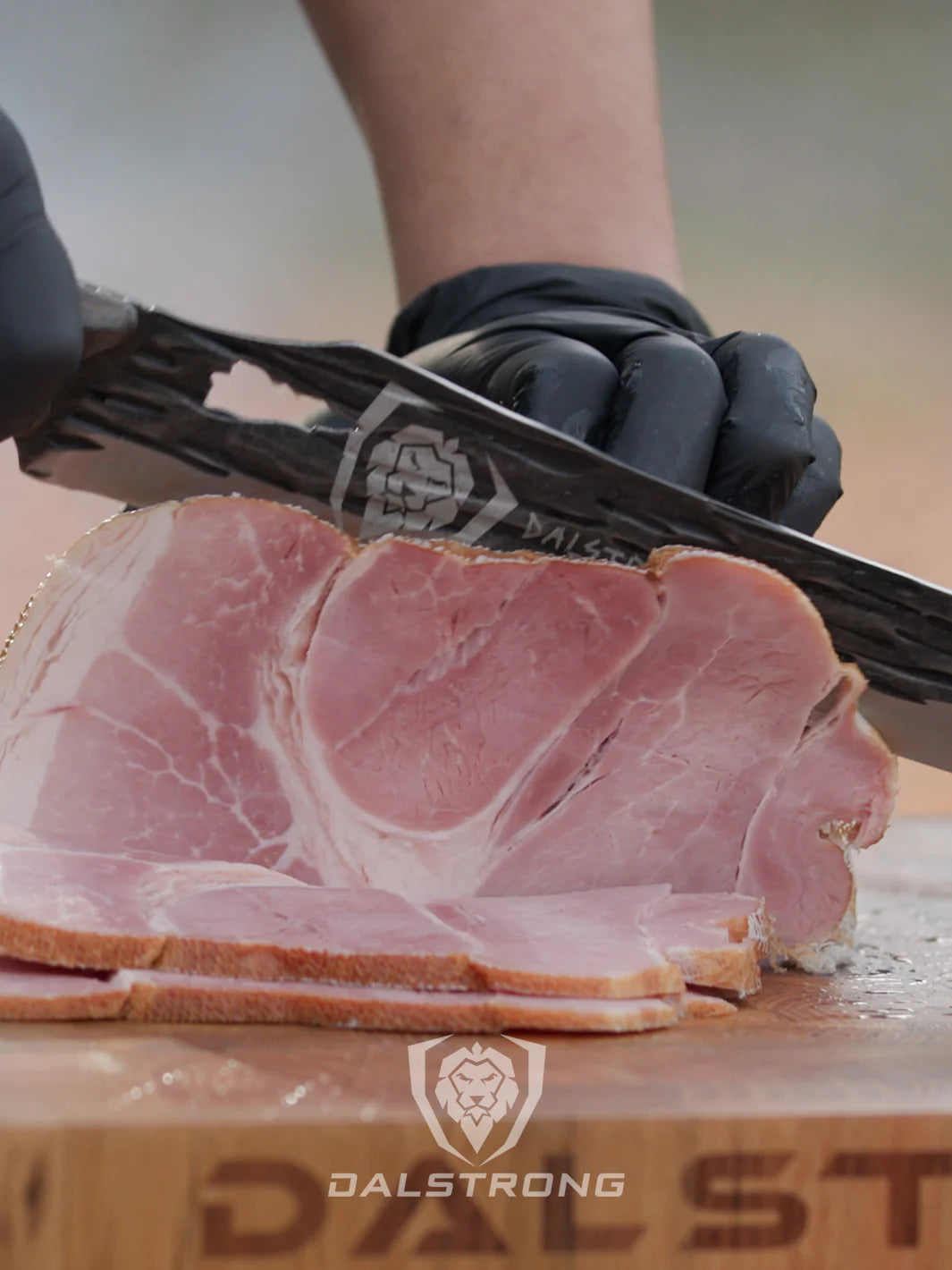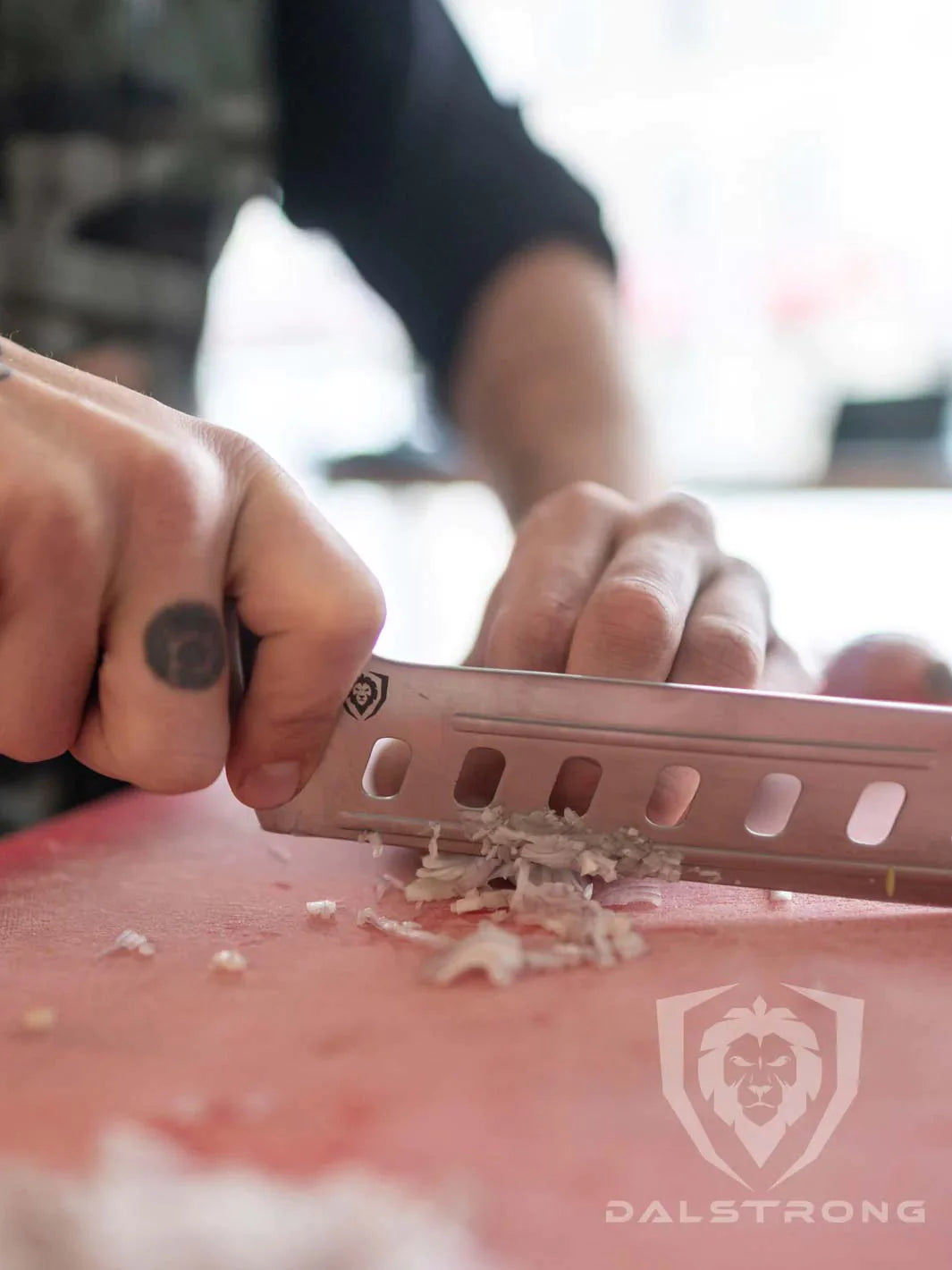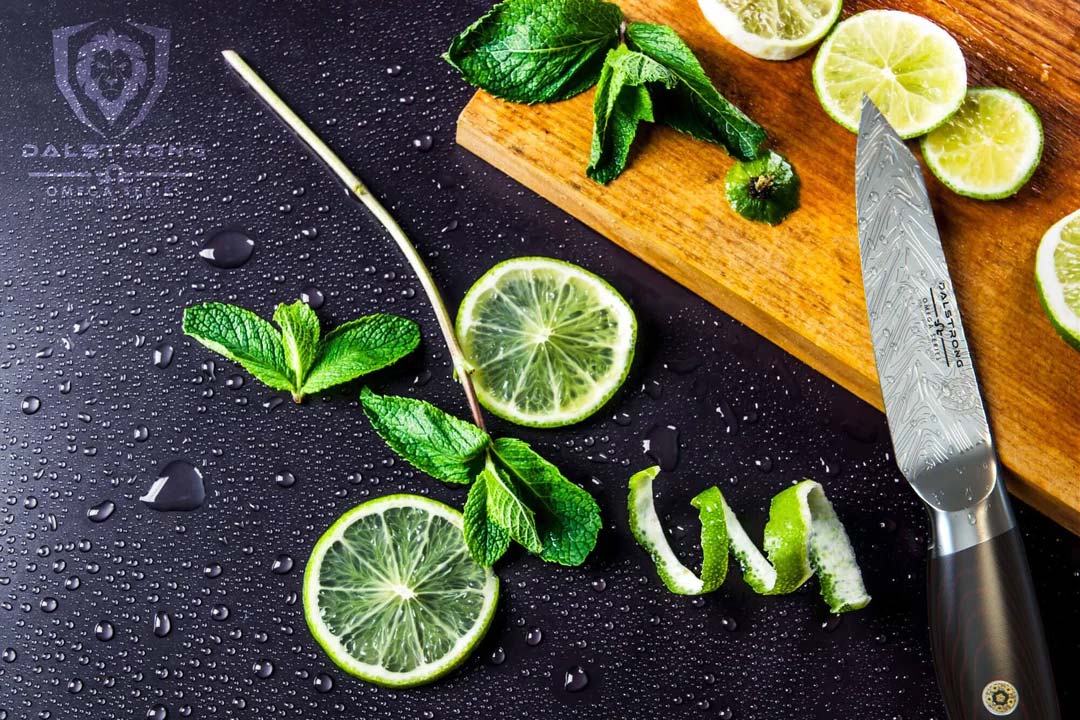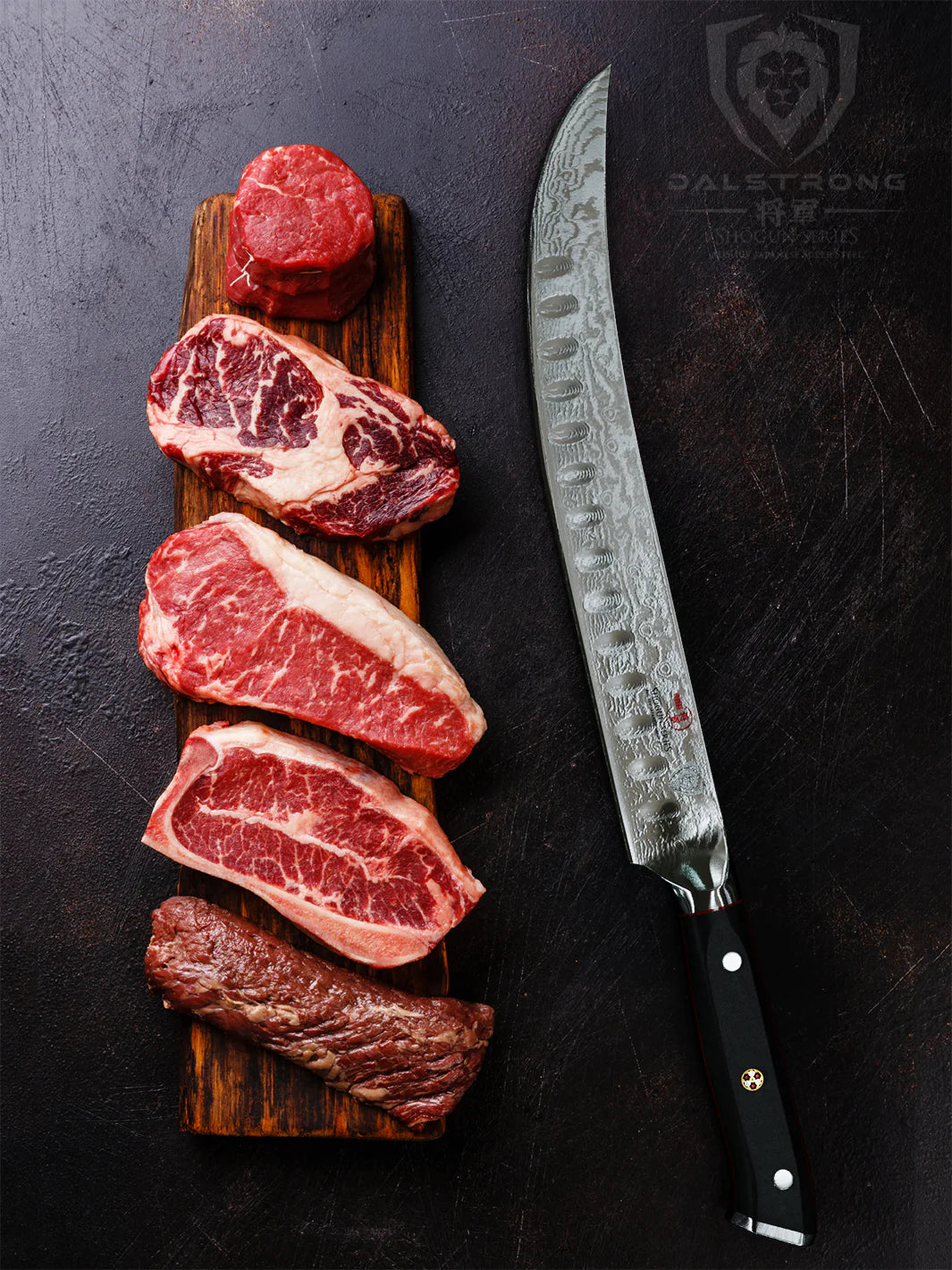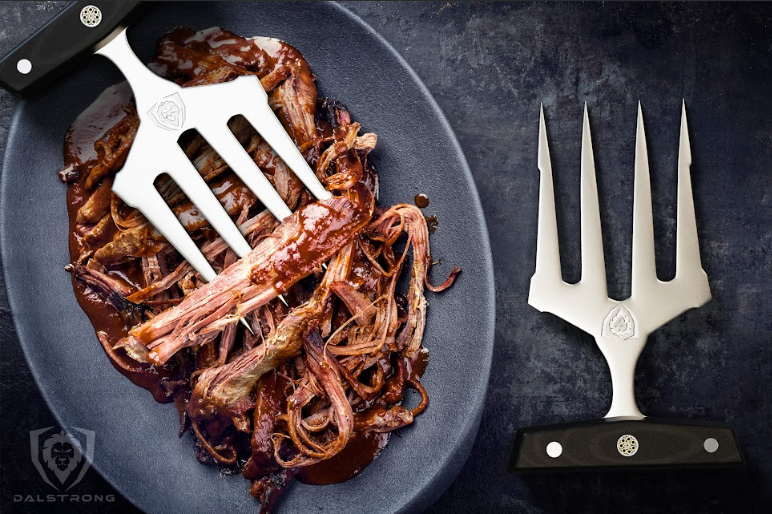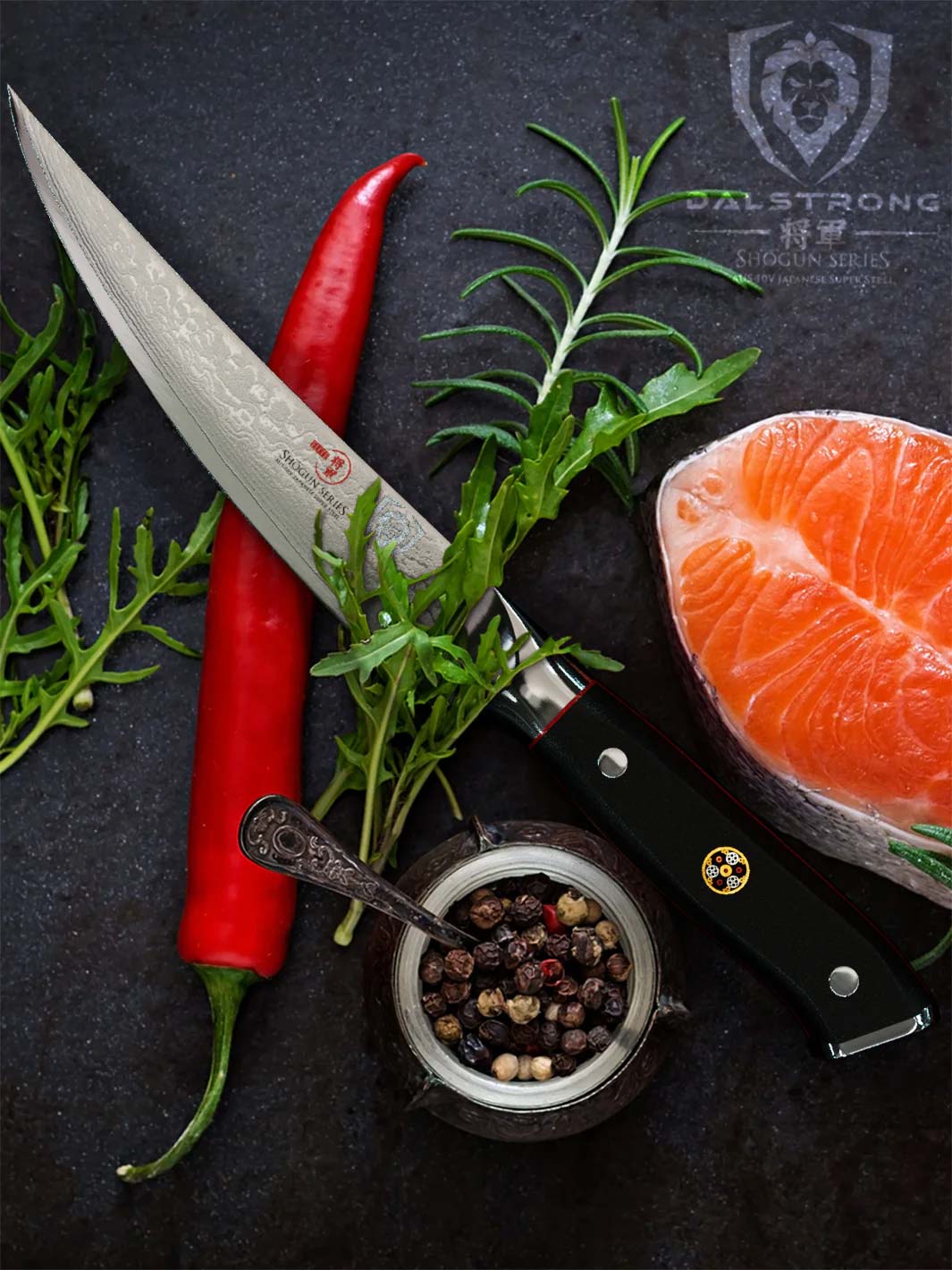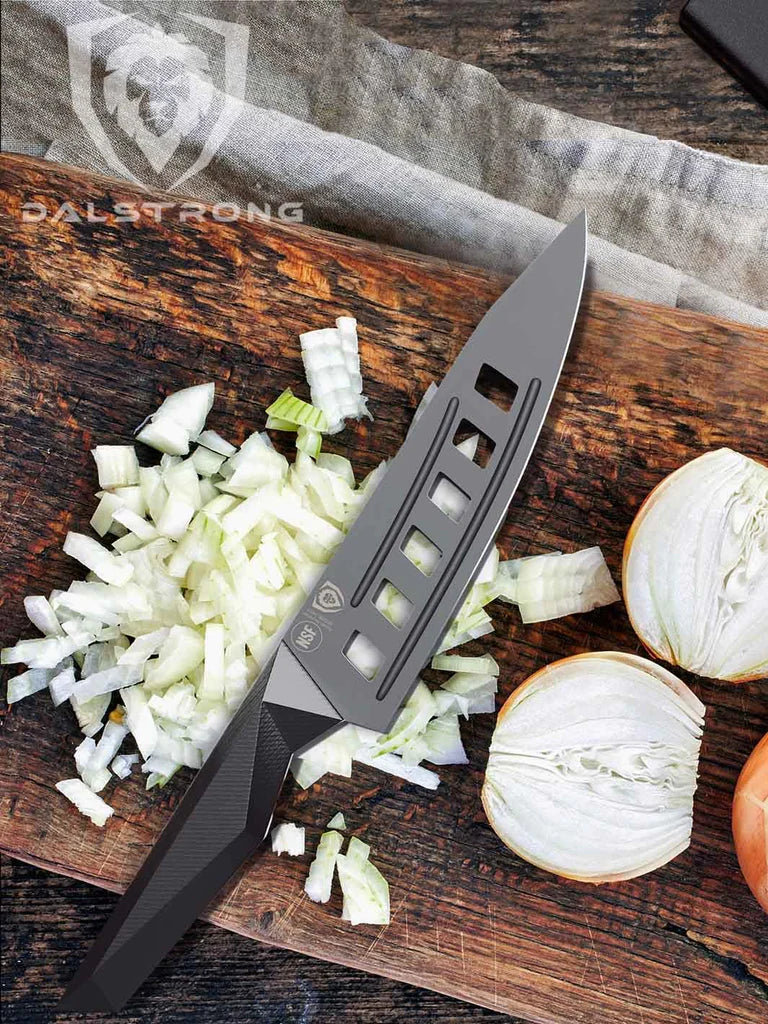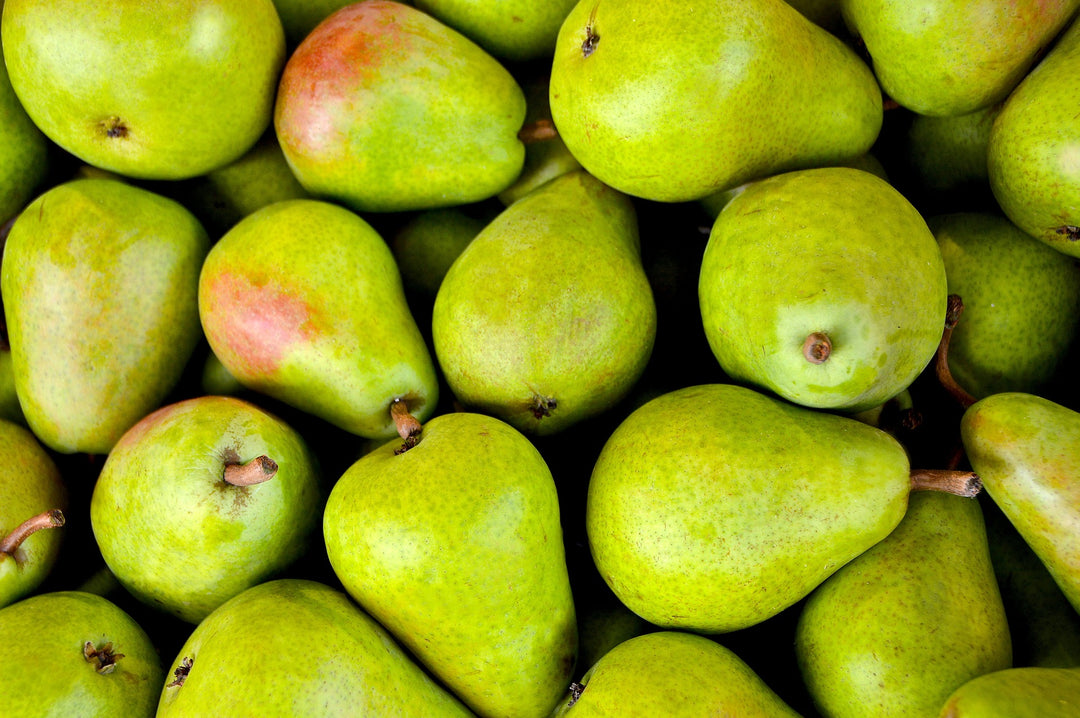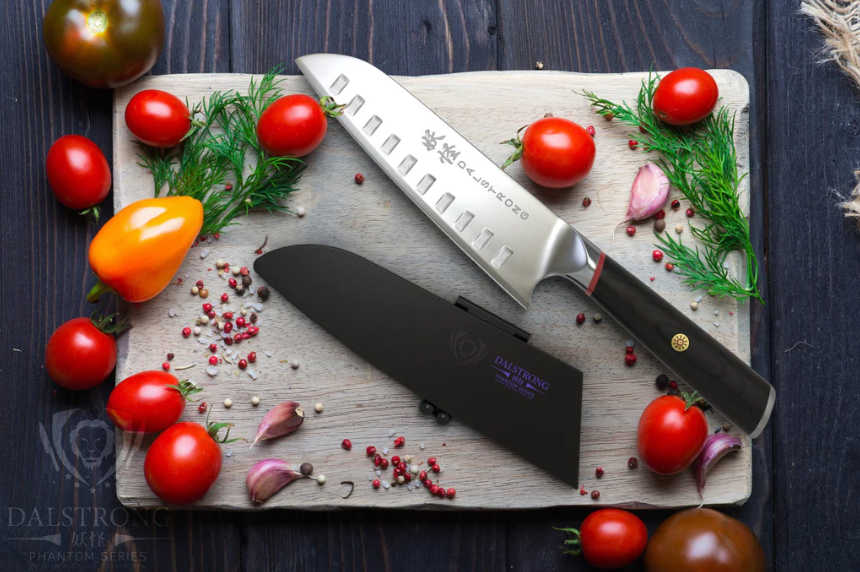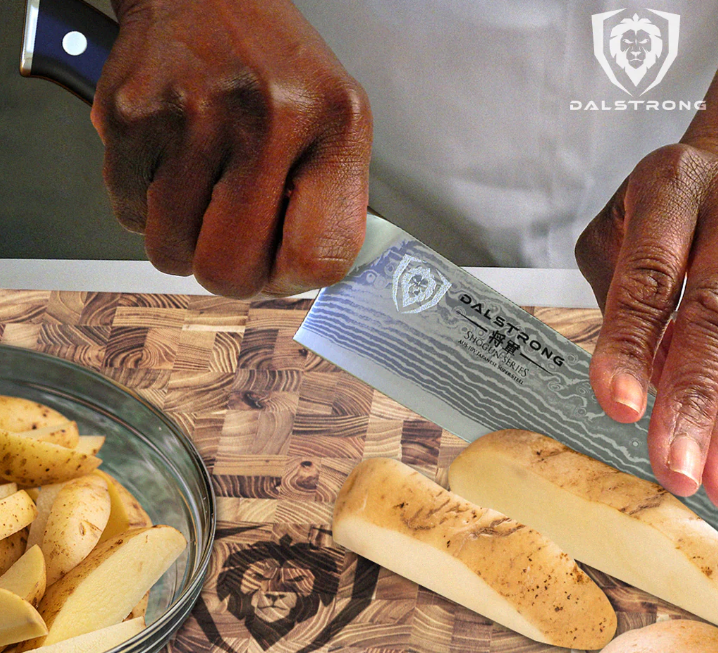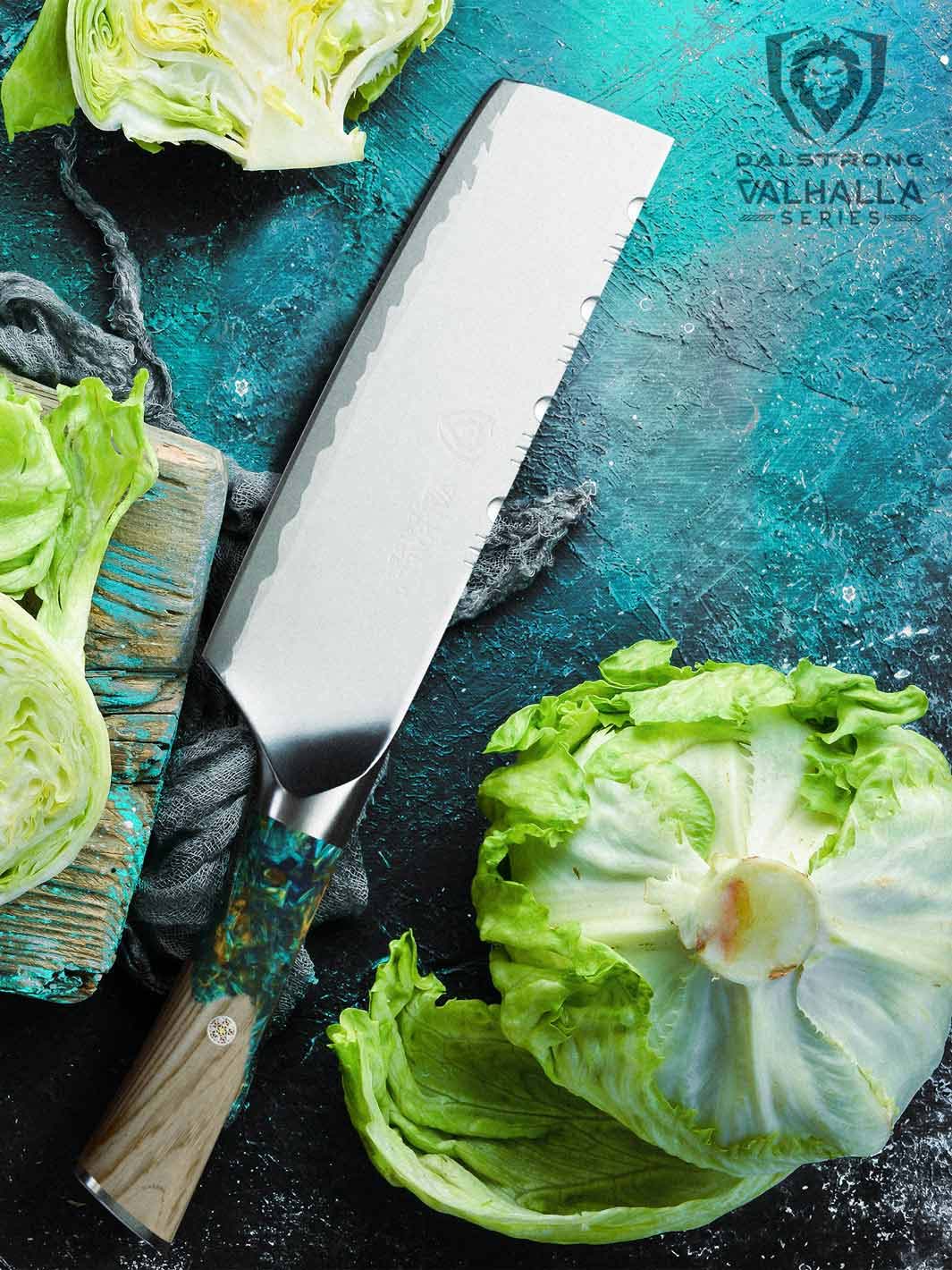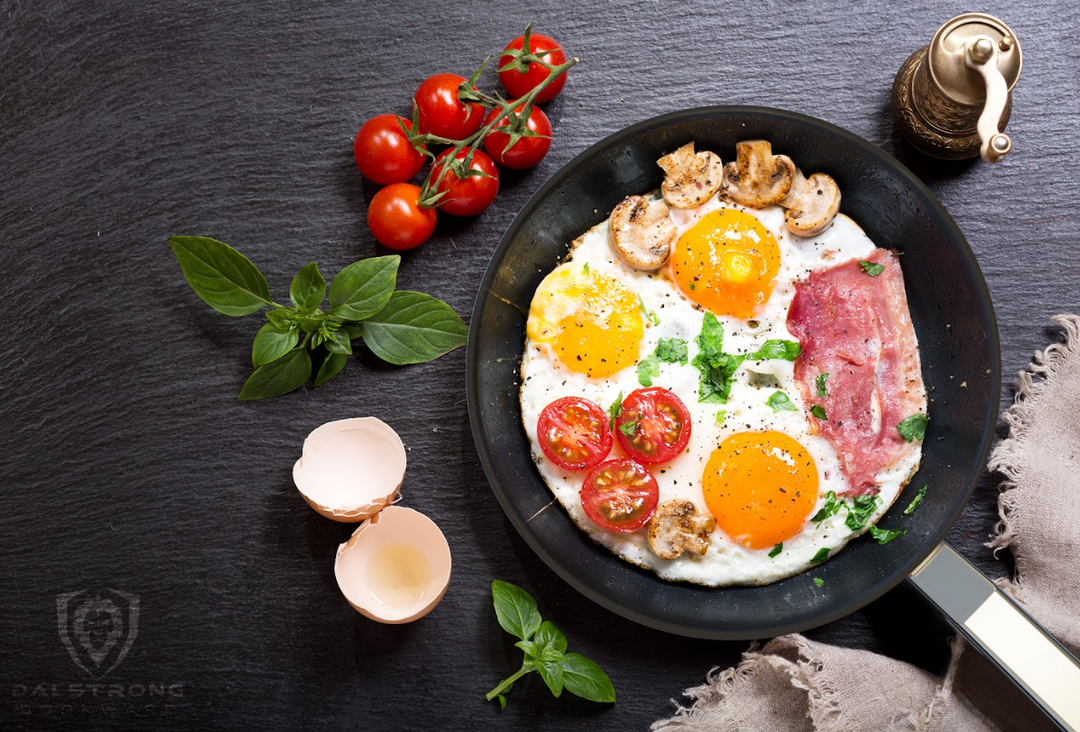How to Cut Butternut Squash
8'' Chef's Knife | Frost Fire Series | Dark Ice | Dalstrong ©
Overview: How to Cut Butternut Squash?
- Set up the cutting station
- Lay the butternut squash on its side
- Slice off the top ½ inch of the squash
- Peel off the skin of the squash
- Slice it in half down the center
- Scoop out the seeds and pulp
- Dice the butternut squash
- Enjoy the squash raw or cook it
7'' Chef's Knife | Gladiator Series | Dalstrong ©
Tis’ the season to get squash-y! With juicy and beautiful butternut squashes cropping up in the market, it is very difficult to not talk about it. The round, hard, thick, and dense texture of the butternut squash can make it slightly daunting to prep, but that’s where I come in.
In today’s blog, let’s talk about how we can preserve our precious fingers from bloody cuts. Read on to know how you can peel and chop your butternut squash quickly, without too much difficulty. But before we get into the details, let's first understand what a butternut squash is and what you would require to cut it with ease.
1. What is Butternut Squash?
Butternut squash is one of the most popular varieties of winter squash. Not only is it a good supply source of Vitamin A but is also rich in potassium and fiber. Unlike its name, this popular and versatile winter squash is actually grown in the summer and harvested in the fall. This squash is the perfect winter fruit as its thick, tough exterior and firm flesh makes it suitable for storing over several months at a stretch.
If you’ve never bought or cooked any butternut squash recipes before, you can identify one by looking for a squash with a long neck and bulbous bottom. Typically, it’s a light tan color fruit on the outside and is bright orange like a pumpkin on the inside. This fruit is naturally sweet and pairs very well with both, sweet and savory recipes.
Here are some key points about butternut squash:
- Although butternut squash is widely known as the winter squash it is harvested in the fall, and it keeps well and lasts for several months.
- This amazing source of fiber and potassium makes it beneficial for digestion, blood pressure, and for healthy skin and hair.
- Squash can enhance or form the base of a range of sweet and savory dishes.
2. How to select Butternut Squash?
To be honest, picking the perfect butternut squash is not rocket science, Just like any other fruit or vegetable, even butternut squash can be underripe, ripe, or overripe. To make the selection process easier for you, keep these hints and tricks in mind when picking one for your kitchen.
- Color- A squash’s color does not change as drastically as a banana but you will be able to tell the difference between its skin and color. Ripe butternut squash will have a darker, tan color with a soft, matte finish. There should be no signs of shininess, cuts, or brown patches. You also want to avoid picking a squash with green patches on the outside as it is most likely not ripe.
- Feel- A ripe squash should feel heavy, which would mean that it is full of natural juices. If the squash is lighter than expected, it either isn’t ripe yet or is too old at that point.
- Sound- To identify a ripe butternut squash, give the squash a knock with your knuckle. You should be able to hear a hollow sound if the squash is ripe.
- Shell- The outside shell of the squash should be hard and firm. It is possible that the fruit has passed its ripe days if you land up feeling any soft spots on the surface of the squash.
3. Tools required to cut Butternut Squash
A juicy winter squash can seem a bit intimidating to slice up at first, but once you know how to do it you’ll realise that it’s not that hard. Here are a few tools you will need to get started:
- Cutting Board: A sturdy cutting board is a must when you have to chop a big and round fruit. If the board is not sturdy enough, it might lose grip and the squash would roll around all over the place.
- A Sharp Knife: A large, sharp chef’s knife is key when handling any winter squash. This will make the task very easy.
- A Vegetable Peeler: The easiest way to deal with the tough skin on this fruit is with a peeler. This will help save time and reduce the chances of injury or cuts.
- A Big Spoon: You will need this when you have to scoop out the pulp and the seeds from the squash.
4. How to cut Butternut Squash?
|
Steps to cut Butternut Squash |
|
|
Step 1: Set up the cutting station |
|
|
Step 2: Lay the butternut squash on its side |
|
|
Step 3: Slice off the top ½ inch of the squash |
|
|
Step 4: Peel off the skin of the squash |
|
|
Step 5: Slice it in half down the center |
|
|
Step 6: Scoop out the seeds and pulp |
|
|
Step 7: Dice the butternut squash |
Note: Remember that the smaller the pieces, the faster the squash will cook. I recommend cutting them into ½ or ¾ inch cubes especially if you plan on roasting them. |
|
Step 8: Enjoy the squash raw or cook it |
|
5. Quick recipe- Butternut Squash Fettuccine Alfredo
|
Butternut Squash Fettuccine Alfredo |
|||
|
Prep Time |
Cook Time 45-50 mins |
Total Time 1 hour |
Serves 6 |
|
Ingredients |
|
|
Butternut Squash |
|
|
Pasta |
|
|
Ingredients |
|
|
Cooking Instructions |
|
|
Step 1: |
|
|
Step 2: |
|
|
Step 3: |
|
|
Step 4: |
|
|
Step 5: |
|
|
Step 6: |
|
|
Step 7: |
|
|
Step 8: |
|
6. Health Benefits of Butternut Squash
It is no hidden fact that fruits and vegetable consumption has visibly helped reduce the risk of many adverse health conditions. Consuming plant-based foods like roasted butternut squash and other butternut squash recipes can help decrease the risk of obesity, diabetes, heart disease, and overall mortality. It can also help enhance the complexion, boost energy and contribute to healthy body weight.
Let’s take a look at some of the health benefits of this fruit:
Lowering and preventing high blood pressure:Butternut squash is rich in potassium and getting enough potassium in the diet can help maintain healthy blood pressure and is as important as lowering sodium intake. A high potassium intake also helps reduce the risk of death from all types of strokes, cardiovascular diseases, and other causes of mortality.
Preventing asthma:Orange plant foods like papaya, sweet potatoes, and yes, butternut squash contain high amounts of beta-carotene content. Beta-carotene is the antioxidant that gives certain fruits and veggies like squash their bright orange pigment. Those who consume a high amount of this appear to have a lower risk of asthma.
Lowering the risk of cancer:Studies revealed that those who consume more carotenoids, including beta-carotene are less likely to develop colon cancer.
Managing diabetes:Patients with type 1 diabetes who consume high-fiber foods like butternut squash have lower overall blood sugar levels. For people with type 2 diabetes, the additional fiber improves blood sugar, lipids, and insulin level.
Healthy skin and hair:The fiber-laden butternut squash can enhance the hair and skin because of its high vitamin A content. Vitamin A is needed for sebum production, which helps keep the hair moisturized. Vitamin A that is provided by this fruit also plays an important role in the growth of all bodily tissues, including skin and hair. The Vitamin C from the butternut squash also helps build and maintain collagen, which provides structure to skin and hair.
Digestive health:A diet that includes foods like butternut squash soup that is high in fiber can help prevent constipation and promote a healthy digestive tract. Studies suggest that dietary fiber also may decrease inflammation and improve immune function. This means that it is helpful in reducing the risks of inflammation-related conditions such as cardiovascular disease, diabetes, cancer, and obesity.
Boost immunity:7. How to prep and store Butternut Squash?
Now that you know how to get perfectly cubed butternut squash, let’s see some ways in which you can prep and store this fruit:
-
Prep-Ahead: Peel and cut butternut squash in advance if you plan on cooking or roasting it. This will be a great time saver and will make meal prep a breeze.
-
Store the squash: Place the cut and uncooked pieces of butternut squash in an airtight container and refrigerate. This will stay fresh for up to 3-5 days.
- Freeze the squash: You can also pre-freeze the pieces. Place the cubes on a baking sheet lined with parchment paper in a single layer and freeze for 1-2 hours. Once the cubes are frozen, add them to a freezer-safe bag or container and freeze for up to 3 months. You can use these frozen pieces straight from the freezer and add them to make butternut squash soups, stew, or use them for roasting.
8. Nutritional Value
|
Butternut Squash |
|
|
Calories |
63kcal |
|
Fat |
0.1g |
|
Saturated Fat |
0g |
|
Carbohydrates |
16g |
|
Protein |
1.4g |
|
Cholesterol |
0mg |
|
Sodium |
6mg |
|
Potassium |
493mg |
|
Fiber |
1.4g |
|
Sugar |
3.1g |
|
Vitamin A |
14850IU |
|
Vitamin C |
39.6mg |
|
Calcium |
260mg |
|
Iron |
0.9mg |
9. Best knives to cut Butternut Squash
The herculean task of slicing a butternut squash become easy-peasy when you have a trustworthy and razor-sharp knife around. To tackle this beastly fruit, I recommend you use a chef’s knife.
Here are some of my favorite and trusted knives that would do a brilliant job and slicing this fruit:
1) Chef's Knife 7" Shogun Series | Dalstrong
This knife might look small and petite but it is no less menacing and effective than a bigger knife. This knife is perfect for slicing, dicing, mincing, and chopping anything as small as a clove of garlic or as large a butternut squash.
Pros:
- The shorter length of the blade gives this knife great control and maneuverability, making it a good tool to peel with.
- Made with AUS-10V Japanese super steel core, this knife provides maximum robustness and is built to last a lifetime, making this a good investment.
- The hand-polished spine of the knife enhances comfort which is required when you’re slicing a big fruit.
Cons:
- While the 7” blade would work well to peel, slicing fruit as bigger than a butternut squash can be slightly difficult.
- If you handle big pieces of meat very often, you might want to go for a knife with a longer blade as it becomes easier to slice through.
2) Chef's Knife 8" | Gladiator Series | Dalstrong
This knife is a workhorse! From handling the heat of professional kitchens to peeling big, dense-fleshed fruits like butternut squash, this chef’s knife will work relentlessly for you. Not only is this knife amazing to work with, but it is also a very attractive tool that will instantly become the star of your kitchen.
Pros:
-
The knife is designed to maximize comfort and maneuverability. This makes it the perfect night to cut fruit as big as butternut squash as it can get slightly tiring on your wrist.
-
The tapered design of this knife is built for hardness and flexibility that comes to great use when dealing with big fruits and veggies.
- Each knife is tempered which makes the blade super strong and provides additional durability.
Cons:
-
The 8” knife blade can prove to be slightly small if the fruit’s size is massive. In this case, you would want to go for a 10” or longer chef’s knife.
-
If you are cutting a butternut squash with such a big knife for the first time, it might get a little difficult to peel and cut with it. If that happens, I suggest you use a peeler to peel the fruit and then go on to slice it up with a chef’s knife. This will reduce the risk of getting cut or hurt in any way.
3) Chef's Knife 8.5" Quantum 1 Series | Dalstrong
A work of art, this knife is meticulously crafted and engineered to provide exceptional performance. Not only is this knife beautiful to look at, it is also super tough as it can withstand the harsh environments of a modern kitchen with ease.
Pros:
- The Nove Prime blade pattern of the blade of this knife is designed to reduce drag and flesh damage. This is very useful when cutting dense-fleshed fruits like butternut squash.
- The 8.5” blade of this knife cuts through big and chunky fruits and vegetables smoothly, with fewer, longer strokes.
- The knife is precision forged and wear-resistant providing it extra durability and increasing the lifetime of the blade.
Cons:
- If you’re new to cutting big fruits like butternut squash, the blade of this length can be slightly intimidating.
-
The narrow handle of this blade might not be everyone's cup of tea. In this case, you might want to choose a from our other Dalstrong chef's knife with wider handles.
4) Chef's Knife 9.5" Shadow Black Series | Dalstrong
Any knife from the Shadow Black Series features an exceptional grip, razor-sharp cutting edge, and is designed for maximum maneuverability. Not only are these knives sleek looking but are aggressive slicers, cutting through almost anything that is placed in front of its blade.
Pros:
- The knife ensures clean and precise cuts and excellent edge retention. This is required if you’re constantly dealing with fruits with lots of moisture.
- The knife is also corrosion-resistant, which helps keep the knife cleaner and extends its lifetime.
- The handle of this knife is designed for a comfortable grip. This is required when slicing big veggies and fruits like butternut squash.
Cons:
- The blade can get slightly intimidating, especially if you’re new to dealing with big, dense fruits.
- The price of this knife can be a little steep for some people. In this case, you can go for one of our other precision-forged knives.
5) Kiritsuke Chef's Knife 9.5" Phantom Series | Dalstrong
This unique knife that a kiritsuke shape with a sword-like front end and a straighter edge making this a great knife for push cuts. From slicing something as delicate as fish to as tough and big as butternut squash, this knife is built to handle everything like a true master.
Pros:
- The knife comes with a precisely tapered blade that helps minimize surface resistance and give you buttery smooth cuts.
- The ice-tempered blade ensures superb edge retention and increases the knife’s durability.
- The knife is very easy to clean and maintain, making this a perfect fit for any kitchen.
Cons:
- The cost of this knife might not sit well with some people, especially if they don’t use the kitchen as often or are new to it.
- It can get slightly difficult to fully control a knife of this length. If you need to do some intricate peeling or carving, you might want to pick a shorter knife that can provide more blade control.
10. Frequently Asked Questions
How do you make butternut squash easier to cut?
To do this, start by making several large slits through the skin on the butternut squash with the tip of a sharp knife. This will help with air release as you heat up the squash.
Then, microwave the squash on high for approximately 3-5 minutes to soften the skin. This will make it easier to cut the squash.
How do you cut up a butternut squash?
The best way to cut butternut squash is to start with a large, razor-sharp chef’s knife and a sturdy cutting board. Start by cutting off the top stem and bottom end of your squash and discard. Then, cut the squash in health where the small, cylinder shape and round, bulb-shaped meet.
Can you microwave butternut squash to make it easier to cut?
Yes, you can microwave butternut squash. This softens the flesh of the fruit, making it easier to cut and peel.
Do you have to peel a butternut squash?
You can eat the skin of butternut squash, so there is no need to peel it. You can simply halve it, scoop out the seed and chop it into chunks. To add more flavor to this, you can also roast it and add it to a warm winter salad or throw it into curries, stews,, or soups. You can also roast the seeds and eat them as a healthy snack or sprinkle it over a finished dish for some extra crunch.






















































































































